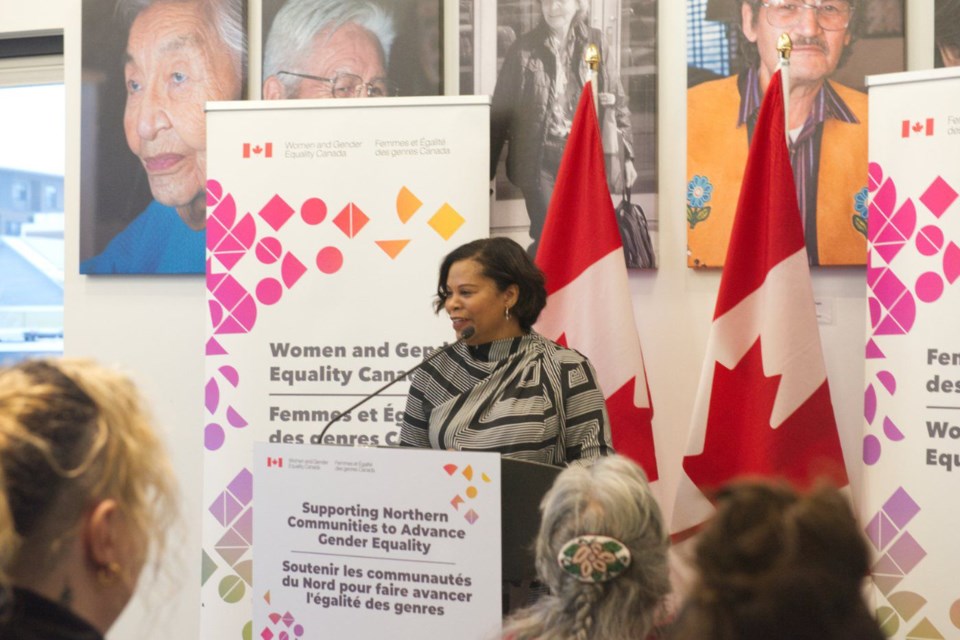Eleven million dollars in federal funds have been announced for northern women’s organizations. The funds are spread across 16 different women’s organizations from Happy Valley-Goose Bay, NL, to Prince George.
The announcement was made in Whitehorse on Sunday, Dec. 8 by Marci Ien, the federal minister of women and gender equality and youth.
Two Prince George organizations are among the organizations to benefit from the funding. The Positive Living North: No Kheyoh T’sih’en T’sehena Society will receive $425,500 through the Women’s Economic and Leadership Opportunities Fund, while the Prince George and District Elizabeth Fry Society will receive $480,880 through the Women's Capacity Fund.
More than $5 million of the funds will go to Toronto-based Canadian Women's Foundation for programming focused on gender equality in the North.
Ien was joined by Yukoners Élodie Bernard of Francophone organization Les EssentiElles and Liz Peredun of Yukon Women in Trades and Technology (YWITT). The organizations received $584,070 and $599,096, respectively.
Peredun, the executive director of YWITT, said the funding was “a testament to endorsing the belief of what we see as a future in gender equality in the trades and technology sectors in particular.”
She said that the organization focuses on supporting women and gender-diverse people working in trades, technology, mining and construction. Peredun said many men had joined to cause to support their coworkers as allies.
As for Les EssentiElles, the funding they have received will go towards researching the specific issues Francophone women in the North face in economic prosperity and accessing leadership, according to Ien.
Ien said the federal gender equality ministry was not receiving applications for funding from Northern women’s organizations.
“There was a huge gap. We weren't seeing people apply. So we came to the people and so basically visited the organizations. We were able to see who was doing what, and then they all applied,” said Ien.
Ien said most of the time organizations are too busy to apply for federal funding opportunities, often having to focus on the work at hand.
She also said that the department used a grading criteria to decide which organizations received funding.
“I would say the biggest part is that systemic part: Is this going to help women? Is this going to help them succeed? Is this going to succeed in a way, and I look at, you know, the trades part, where women haven't succeeded before, is it going to make new inroads? What is going to happen here? Is it viable?”
According to Statistics Canada, the rate of intimate partner violence is highest in the North, with a rate of 1,073 victims per 100,000 people. In comparison, the rural south has a rate of 393 per 100,000 and the urban south has a rate of 299 per 100,000.
The rate of intimate partner violence in the North has increased by 21 per cent since 2018. In the rural and urban south, rates have increased 17 per cent and 12 per cent, respectively.

.png;w=120;h=80;mode=crop)

